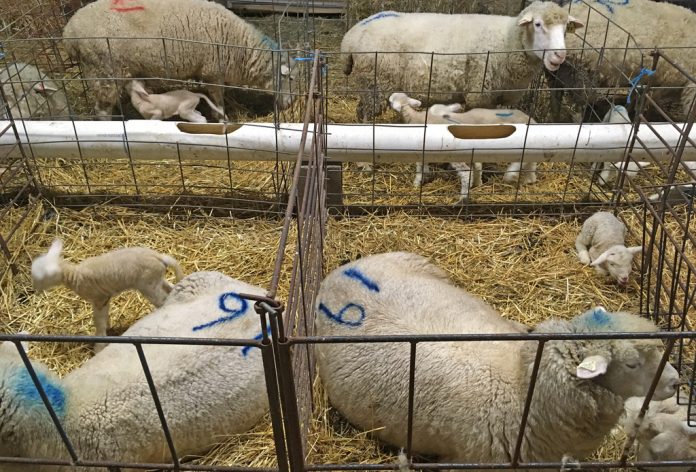
More than a decade ago, my dream job evaporated when The Rocky Mountain News, in Denver, Colorado, shut its doors.
The Pulitzer Prize-winning newspaper closed just months shy of its 150th birthday. Its demise rocked the industry. Fueled by the national economic downturn, slashed advertising dollars and the rise of The Internet, it was a harbinger of what would continue to be a tumultuous time over the next decade.
“The Rocky Mountain News was a newspaper before Colorado was a state,” wrote Tom Jones, senior writer for Poynter Institute, in a 10-year retrospective published earlier this year.
Although the city’s other newspaper, The Denver Post, continues to publish, times have been tough. “Denver has gone from a two-newspaper town with more than 500 journalists and a combined daily circulation of 846,458 to a single newspaper with 170,000 daily circulation and fewer than 80 journalists,” Jones wrote.
Life goals
I enjoyed sports writing as a young reporter. One of my favorite memories was covering high school basketball games in rural Wyoming. Nobody can play basketball like teens from ranches and the Crow Nation. If I ever had a defined “goal” in life, it was to cover sports at The Rocky Mountain News. That never happened, obviously, but I have thought about that turn of events a lot, as my life twisted and turned on its merry way.
Back to the newspaper closing. It left a lot of communities in and around Denver underserved. The same can be said of anywhere in the country where newspapers have folded or merged.
Just north of our office, The Vindicator, in Youngstown, Ohio, made national headlines for all of the wrong reasons this summer, when it announced its closing. In this case, the paper actually made it to its 150th anniversary before shutting the doors. While the paper is still published by a neighboring company, coverage is spread thin.
Sad narrative
Think about all of this while I drop this story opening, from TIME, published Nov. 27, right here:
“For nearly two centuries, the Rieckmann family has raised cows for milk in this muddy patch of land in the middle of Wisconsin. Mary and John Rieckmann, who now run the farm and its 45 cows, have seen all manners of ups and downs — droughts, floods, oversupplies of milk that sent prices tumbling. But they’ve never seen a crisis quite like this one.
“The Rieckmanns are about $300,000 in debt, and bill collectors are hounding them about the feed bill and a repayment for a used tractor they bought to keep the farm going. But it’s harder than ever to make any money, much less pay the debt, Mary Rieckmann says, in the yellow-wallpapered kitchen of the sagging farmhouse where she lives with her husband, John, and two of their seven children.”
The story goes on. Trade wars. Weather. Farm debt. Milk prices. Rapid technology advances. Suicides. It warns that farmers are facing extinction.
But I got stuck on the “muddy patch of land” and the “sagging farmhouse” description. I thought about it as I got up early, pulled on my tattered overalls — spattered with manure and birthing fluids — my ragged barn jacket and boots and checked for lambs. A barn check showed two sets of twins and a single. I tubed a set of twins that we’ve been keeping an eye on. Sure enough, by the end of that, I could add “milk-spattered” to the description of my overalls.
And I go back to those descriptions, and I wonder: how often has the reporter set foot on a farm? Did she parachute in, get her “sad farmer” story and leave?
No hope?
The answer to everything, according to TIME, is better antitrust enforcement. The government needs to stop consolidation of Big Retail and Big Processing. There is a brief mention of how organic farmers are making it work.
The writer also throws in some statistics on schools closing and young people leaving rural areas — I guess, because there’s no hope. Yep. She adds, I kid you not: “There’s nothing on the horizon to turn around these rural areas.”
Funny. I think about the stories we’ve done recently. Of Mary Anne Kettering and the Bruntys, farmers who opened their own meat markets — thanks to incredible community support.
Of John-Scott Port, a sixth-generation farmer who’s is trying everything, even opening an event barn for farm-to-table dinners and weddings. (“If it doesn’t work, we’ll slide the doors shut and put hay in it,” his father said. Gotta love farmers, right?)
I think about Julie Prentice, who lost part of her arm in a farming accident 20 years ago but embraces the life she has. I think about 14-year-old Madison Cope, who sold her fair hog for $10,000 to help her friend with a debilitating illness. Hers is just one of many similar stories we’ve covered over the past months.
I think about the farmers who gathered hay and supplies and drove out to the Midwest, not once, but twice, in recent years, to help other farmers.
What to do
So, here I sit, contemplating the fate of two industries I’m involved in. Both are filled with people who are passionate about what they do. But times have been hard. Many of the statistics used in the TIME article cover roughly the same timeline as the media downturn. As I wrote this column, emails pinged from various media groups asking for donations.
The story in TIME is the easier one — things are terrible; here’s why — but context is lost. It sacrifices depth, because that would have taken more time.
In every industry, there are individuals, who are doing things differently. In fact, thanks to the media downturn, initiatives like ProPublica and Report for America were born. In Youngstown, there are various initiatives to provide different reporting. Those pleas for donations? Also a way to think outside the box.
Maybe journalism will be more vibrant in the end. Time will tell.
Here’s where we’re at at Farm and Dairy. We’re purposely covering the folks who do things differently. We believe there is vibrancy in agriculture, already. And that there can be more.
It may look different than it did 20 or 50 years ago. But that’s OK.












